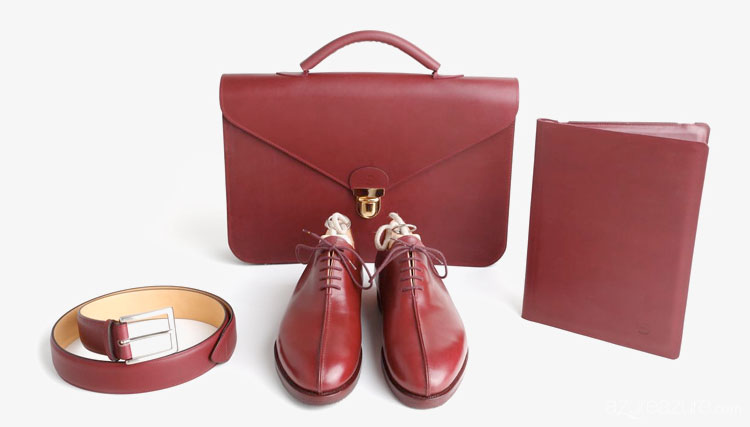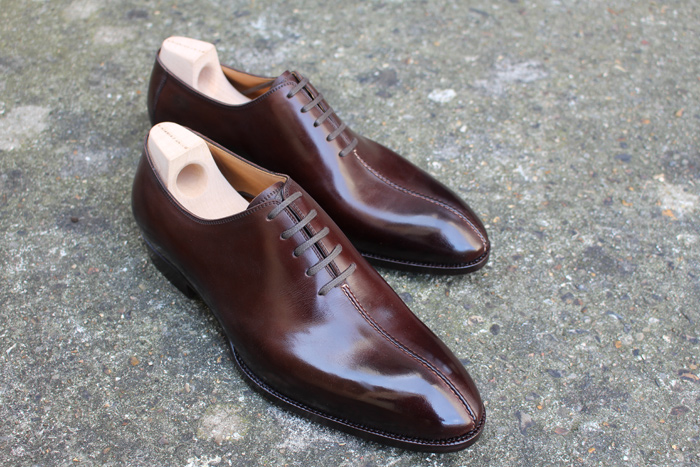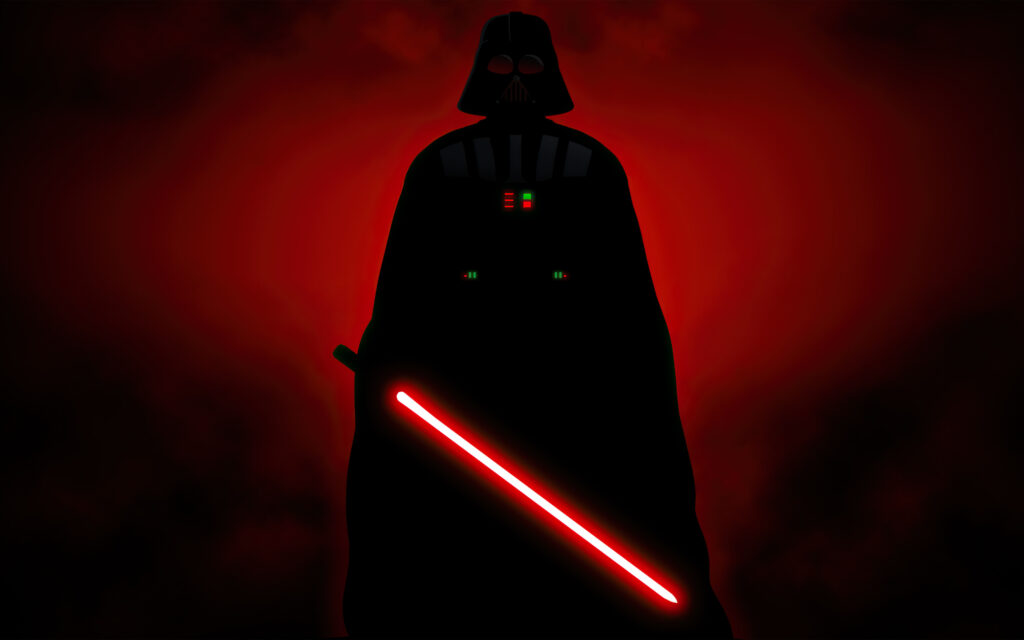The model name of the pair was not given by me, but by Mr. Alexandru Maftei, which means Grand Duke in German.
Aanother name for this style is Viennese, Viennese, that is, the most classic and traditional style of Vienna, Austria. I’ve shown this style to everyone in Maftei’s signature model.

It’s also available at Rudolf Scheer & Söhne, Austria’s top bespoke shoemaker.

Saint Crispin’s, also from Vienna, offers this style unsurprisingly.

Let us check the presentation of Maftei.
Unboxing

Black box is nothing extraordinary.

The side of the shoe box says the style, and Double Stitched, which means the craftsmanship is Norwegian Stitching construction.

The box opens and there’s still this golden brown suede shoe bag with a handwritten logo stitched on the matching leather.
Last

Sitting on Pei (775) last, also the iconic Viennese.
Pattern

This black and red patina was designed by Lucia Maftei, the wife of master Alexandru Maftei.

I call it Darth Vader.
The other selling of this pair is of course the Double Stitch, a 360-degree Norwegian seam.

Personally, I’m not a fan of Norwegian stitching, and the reason is neither that I have a problem with the construction, nor that I think it’s pretentious, but I think that the color of the stitching, and the color of the leather of the uppers, is a good point to match up, but I haven’t seen any that are done particularly well so far.

The white stitching on this pair, paired with the red color on the surface, looks okay.
Outsole

Close channel Goodyear.
Is it Norwegian Stitching construction? I’ve also said a couple times that Norwegian can be thought of as a variant of Goodyear.

There are two things to be said about the finish on the soles.
One is the color, this one is coated in a darker oak color and, my feeling is that it’s coated thicker, as it feels extra smooth and moist in my hands. I can’t say for sure if this oak color matches the color of this upper, but I think that Maftei shoes have a heavy bespoke feel and very low industrial attributes with all the various soles. Personally, I’m probably a little more industrialized minded and like consistency.
Another one worth talking about is the non-fiddleback waist, also known as Square Waist. I’ve been intensively looking at a lot of bespoke shoemakers in Central and Eastern Europe lately, including German, Austrian and Hungarian ones. What I’ve found is that bespoke shoes in this region, no matter what the price is, are not a fan of fiddleback waist. It’s really not that they won’t or can’t do it, but rather the more down-to-earth aesthetic of this region, which for so many years has had no enthusiasm for very aggressive and fancy designs.
Norwegese Construction

This Norwegese construction has two points.
One is where is the Goodyear welt stitches? I literally held this and looked at it closely for a long time and just couldn’t see where the stitching towards the sole was.
Look at Paolo Scafora’s Norwegese construction, stitches on welt is clear.

The top two are perpendicular to the upper, while the lower, brown line, connects to the outsole.
But with the Maftei Ersherzog, you can’t see the bottom one at all. I had the assumption that the white stitching underneath was actually the connection to the outsole. But there are two problems with this assumption. First, the density of the stitching, because each stitch is so long, the density of the stitching is extremely low, which is not in line with Mr. Alexandru Maftei’s requirement of quality. Secondly, the angle, the angle of the white line down there, it’s not exactly perpendicular to the upper leather nor to the sole. So if this stitching was indeed attached to the outsole, where it is on the sole, it would be more in the center, not particularly marginal. But the location of the stitching on the sole is visible from that channel (see sole diagram), so it doesn’t make sense either. Basically, I think that this inference is not valid.
The second inference is that there was originally a Goodyear connection to the sole underneath, but it’s covered by the one underneath the two white lines. This one is just an inference, so feel free to chime in.

The second point of discussion this is the Norwegian seam channel. This, too, is the first time I’ve seen it. You can see that underneath the Norway seam, it is attached to the sole along the strip, and on top, there is a turned up skin, I do not know whether this is along the strip or the top skin, anyway, it is somewhat similar to the storm stitch, also called reverse stitching.
No intention to say which is better or worse, including whether it’s more beautiful this way, I have no conclusions. Anyway, it was fun to show me what I hadn’t seen before.
Leather
I talked about leathers used by Maftei, such as upper leather, lining leather, this pair is on sock lining.

I can’t actually read this leather very well, but it’s definitely aniline leather anyway, it’s slightly hairy to the touch but very soft. From the grain, it’s not small, so I can’t really say at what level this insole leather is.
One thing I do know, though, is that the insole leather of the average adult shoe is a harder, and very shiny leather. the John Lobb is particularly noticeable.

Lasted Shoe Tree
To remove this type of shoe tree, you have to rotate it and hold steady, otherwise the widest part of the outside of the foot will get stuck in the shoe and you won’t be able to get it out at all.

Summary

Gaze from the Viennese.

